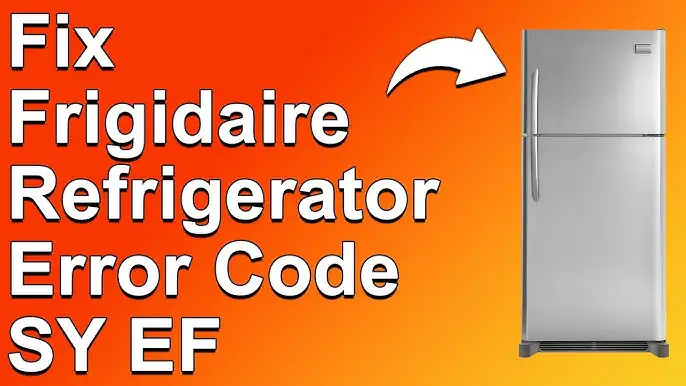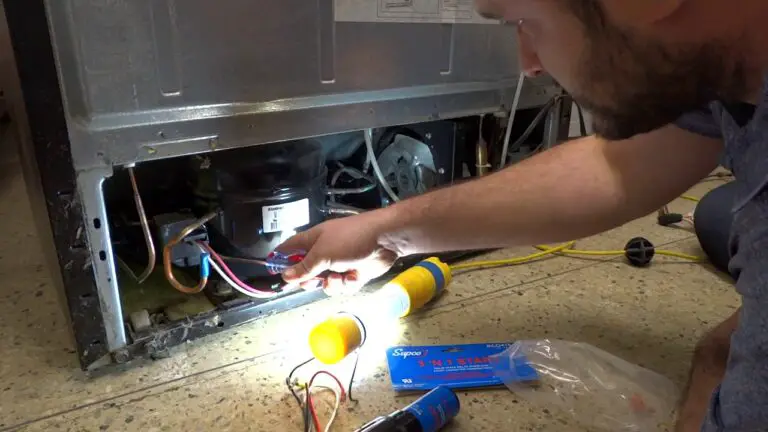Kitchen Faucet Troubleshooting: Quick Fixes and Tips
First, check for leaks and low water pressure. Then, inspect the aerator and supply lines.Kitchen faucet issues can be frustrating but often have simple solutions. Leaks or low water pressure are common problems that homeowners face. Start by examining the faucet for any visible leaks and checking the water pressure. Inspect the aerator for clogs and the supply lines for any obstructions.
Sometimes, a worn-out washer or cartridge could be the culprit. Regular maintenance and prompt troubleshooting can extend the lifespan of your kitchen faucet. Addressing these issues early on can save time and money. With a few basic tools and some patience, you can often fix these problems yourself without calling a plumber.
Common Faucet Issues
Kitchen faucets are essential for daily tasks. Sometimes, they develop issues that disrupt their function. Knowing common problems helps in quick fixes. Below, explore the most frequent faucet troubles.
Leaky Faucet
A leaky faucet wastes water and increases bills. Fixing it quickly is essential. Common causes of leaks include:
- Worn-out O-rings: These are small rubber rings that seal the faucet. Over time, they wear out.
- Corroded Valve Seat: The valve seat connects the faucet and spout. Corrosion can occur, causing leaks.
- Loose Parts: Screws and nuts inside the faucet may loosen over time.
To fix a leaky faucet, replace the worn-out parts. Check and tighten any loose components.
Low Water Pressure
Low water pressure can be frustrating. It slows down your kitchen tasks. The causes can vary:
- Clogged Aerator: The aerator adds air to the water stream. It can get clogged with debris.
- Mineral Buildup: Hard water leaves minerals inside the faucet. This buildup restricts water flow.
- Plumbing Issues: Problems within the home’s plumbing can lower water pressure.
To improve water pressure, clean the aerator. Use vinegar to dissolve mineral deposits. Check the home’s plumbing for any issues.

Tools And Materials
Troubleshooting a kitchen faucet can save you money and time. Before you start, gather the necessary tools and materials. This guide will help you understand what you need for a successful repair.
Basic Tools
Having the right tools is crucial for faucet troubleshooting. Below is a list of essential tools:
- Adjustable Wrench: Useful for loosening and tightening nuts.
- Phillips and Flathead Screwdrivers: Needed for removing screws.
- Pliers: Handy for gripping and turning.
- Plumber’s Tape: Prevents leaks in threaded connections.
- Allen Wrenches: Required for set screws in handles.
| Tool | Purpose |
|---|---|
| Adjustable Wrench | Tighten or loosen nuts |
| Phillips Screwdriver | Remove screws |
| Flathead Screwdriver | Remove screws |
| Pliers | Grip and turn |
| Plumber’s Tape | Seal threaded connections |
| Allen Wrenches | Remove set screws |
Replacement Parts
Sometimes, you need to replace certain parts. Here are common replacement parts:
- O-Rings: These prevent leaks at the base.
- Cartridges: Control water flow and temperature.
- Washers: Stop drips from the spout.
- Valve Seats: Ensure a tight seal.
- Spray Hose: Replace if there are cracks or leaks.
Make sure you have the correct parts before starting. This ensures a smooth and quick repair process.
Fixing A Leaky Faucet
Fixing a leaky faucet can save water and reduce your bill. A leaking faucet often wastes gallons of water daily. Follow these steps to fix it yourself.
Identifying The Leak
First, find where the leak is coming from. Common leak points are the spout or handles. Check for drips around these areas.
Use a dry cloth to wipe around the faucet. This helps see where water appears. If the leak is from the spout, the washer might be the issue. If it’s from the handles, the O-rings could be worn out.
Replacing The Washer
To replace the washer, you need a few tools. Gather a wrench, screwdriver, and a new washer. Follow these steps:
- Turn off the water supply. Look under the sink for valves.
- Open the faucet to release any remaining water.
- Remove the handle using the screwdriver.
- Use the wrench to unscrew the packing nut.
- Take out the old washer from the stem.
- Replace it with the new washer.
- Reassemble the faucet. Turn on the water supply.
Check the faucet for leaks. If it still leaks, the issue might be deeper. Consider calling a plumber.
| Tool | Purpose |
|---|---|
| Wrench | Unscrew the packing nut |
| Screwdriver | Remove the handle |
| New Washer | Replace the old, worn-out washer |
Addressing Low Water Pressure
Experiencing low water pressure in your kitchen faucet can be frustrating. It disrupts daily tasks like washing dishes and filling pots. This guide will help you troubleshoot and fix low water pressure issues effectively.
Cleaning The Aerator
The aerator is a small screen at the faucet’s tip. It mixes air with water to reduce splashing. Over time, debris and mineral deposits can clog the aerator, reducing water pressure.
To clean the aerator, follow these steps:
- Unscrew the aerator from the faucet.
- Disassemble the aerator carefully.
- Soak the parts in vinegar for 30 minutes.
- Scrub the parts with a brush to remove debris.
- Rinse the parts thoroughly with water.
- Reassemble and reattach the aerator to the faucet.
Cleaning the aerator can significantly improve water flow. Make sure to clean it regularly to avoid clogs.
Checking Supply Lines
Another common cause of low water pressure is blocked supply lines. These lines deliver water to your faucet from the main supply.
To check the supply lines, follow these steps:
- Turn off the water supply to the faucet.
- Disconnect the supply lines from the faucet.
- Inspect the lines for kinks or blockages.
- Flush the lines with water to clear any debris.
- Reconnect the supply lines to the faucet.
- Turn on the water supply and check the water pressure.
Inspecting and clearing the supply lines can help restore normal water pressure. Ensure the lines are free from kinks and blockages.
By following these steps, you can address low water pressure in your kitchen faucet. Keep your faucet in good condition for optimal performance.
Dealing With Noisy Faucets
Is your kitchen faucet making strange noises? A noisy faucet can be frustrating. Understanding the root cause can help fix the issue quickly. Let’s explore common reasons behind a noisy faucet.
Loose Parts
Loose parts can cause rattling or humming sounds. Check the handle, spout, and screws. Tighten any loose parts using a screwdriver. This simple step can often resolve the noise issue.
Important: Always turn off the water supply before tightening parts. This prevents water from spraying out unexpectedly.
Air In Pipes
Air trapped in pipes can create a loud, banging noise. This is often called “water hammer.” To fix it, follow these steps:
- Turn off the main water supply.
- Open all faucets in the house.
- Let the water drain completely.
- Close the faucets and turn the water supply back on.
This process helps to release trapped air. If the noise persists, consider installing a water hammer arrestor.
Note: Persistent issues might need professional help. Don’t hesitate to call a plumber.
Quick Tips:
- Check for loose washers and O-rings.
- Inspect for mineral build-up in the aerator.
- Ensure the faucet is installed correctly.
Noisy faucets can be a quick fix. Follow these steps to enjoy a quiet kitchen.
Resolving Faucet Sprayer Issues
Having trouble with your kitchen faucet sprayer? You’re not alone. Many homeowners experience issues with their faucet sprayers. The good news is most problems can be resolved with simple troubleshooting. In this section, we’ll cover common sprayer issues and how to fix them.
Clogged Nozzle
A clogged nozzle can cause weak water flow. To fix this:
- Turn off the water supply.
- Remove the sprayer head from the hose.
- Soak the nozzle in a vinegar solution. This helps dissolve mineral buildup.
- Use a small brush to clean the nozzle holes.
- Rinse thoroughly and reattach the sprayer head.
If the nozzle is still clogged, consider replacing it.
Hose Replacement
A leaky or damaged hose needs replacing. Follow these steps:
- Turn off the water supply under the sink.
- Disconnect the hose from the faucet and sprayer head.
- Measure the length of the old hose. This ensures you buy the correct replacement.
- Purchase a new hose from your local hardware store.
- Attach the new hose to the faucet and sprayer head.
- Turn on the water supply. Check for leaks.
Make sure all connections are tight to prevent future leaks.
By following these steps, you can resolve most faucet sprayer issues. Regular maintenance can prevent problems and extend the life of your faucet sprayer.
Preventative Maintenance
Preventative maintenance is key to ensuring your kitchen faucet works efficiently. Regular upkeep can prevent costly repairs and extend the faucet’s life. Let’s explore some crucial steps for maintaining your kitchen faucet.
Regular Cleaning
Regular cleaning is vital for a smooth-running kitchen faucet. Dirty faucets can lead to clogs and leaks. Clean your faucet weekly using a mild cleaner and a soft cloth.
- Wipe the faucet with a damp cloth.
- Use a mild cleaner to remove stains.
- Scrub around the base to prevent mineral buildup.
For deeper cleaning, soak the faucet aerator in vinegar. This removes hard water deposits and improves water flow. Remember to rinse thoroughly after cleaning.
Timely Replacements
Timely replacements can save you from bigger problems. Inspect your faucet regularly for wear and tear. Replace parts as soon as they show signs of damage.
| Part | Signs of Wear | Replacement Frequency |
|---|---|---|
| O-Rings | Leaking around the base | Every 1-2 years |
| Cartridge | Dripping or low water pressure | Every 3-5 years |
| Aerator | Reduced water flow | Every 6 months |
Keep a set of basic tools handy for quick replacements. A wrench, screwdriver, and replacement parts are essential. This ensures you can address issues promptly and efficiently.
When To Call A Professional
Sometimes, a kitchen faucet problem can be too difficult to fix alone. Knowing when to call a professional can save you time, effort, and money. Here, we’ll discuss situations that demand expert help.
Complex Repairs
Some repairs are not easy. They require special skills and tools. For instance, replacing a faucet valve can be very tricky. It involves taking apart parts of the faucet. If done wrong, this can cause leaks and damage.
Another complex repair is fixing low water pressure. This issue can come from many sources. It might be a problem with the pipes. Or it could be an issue with the faucet itself. A professional can quickly find and fix the problem.
Leaking under the sink is another complex issue. The leak could be from the faucet, the pipes, or the sink itself. A professional plumber knows how to spot and fix these leaks.
Persistent Problems
Some problems just won’t go away. If you have tried to fix an issue many times but it keeps coming back, it’s time to call a pro. Persistent dripping is a common problem. It can waste a lot of water and increase your bills. A professional can replace the worn-out parts and stop the drip.
Constant clogging is another issue. Even if you clean the faucet aerator, the problem might still occur. This could mean there is a bigger issue in your plumbing system. A professional can find and fix the root cause.
Water temperature issues can also be persistent. If your water is always too hot or too cold, it might be a problem with the mixing valve. A professional can adjust or replace this valve to fix the issue.
Frequently Asked Questions
What Is The Most Frequent Failure In A Typical Faucet?
The most frequent failure in a typical faucet is a worn-out washer or O-ring. This causes leaking or dripping.
Why Is The Water Not Coming Out Of My Kitchen Faucet?
Your kitchen faucet may be clogged, have a faulty valve, or face low water pressure. Check for any leaks or blockages.
Why Is One Side Of My Faucet Not Working?
A clogged aerator, faulty valve, or sediment buildup can cause one side of your faucet to stop working. Check and clean the aerator, or consider replacing the valve. If the problem persists, consult a plumber.
Why Is There No Water Coming Out Of My Tap When I Turn It On?
Check if the water supply is turned on. Look for leaks or clogs in the pipes. Verify if there are local water outages.
Why Is My Kitchen Faucet Leaking?
A worn-out O-ring or cartridge often causes leaks. Replacing these parts usually resolves the issue.
Conclusion
Solving kitchen faucet issues can be straightforward with the right guidance. Regular maintenance prevents future problems. Keep tools handy and follow our troubleshooting steps. Your kitchen faucet should now work smoothly. For persistent issues, consider seeking professional help. Enjoy a hassle-free kitchen experience!




